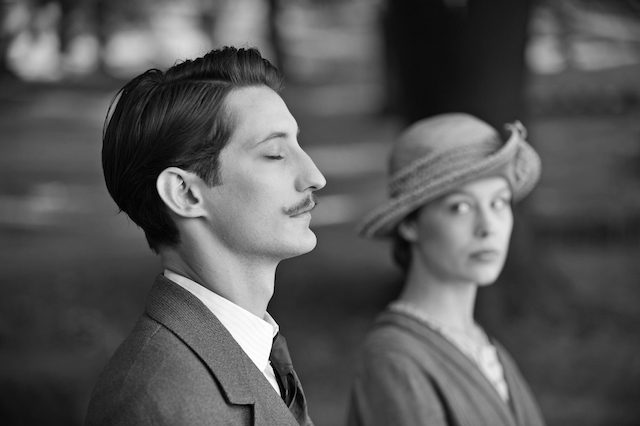Review: ‘Mr. Turner’ features fine mouth noises from Timothy Spall

Sony Pictures Classics
‘Mr. Turner’
Director: Mike Leigh
Stars: Timothy Spall, Dorothy Atkinson
Rating: R
4 (out of 5) Globes
For years Mike Leigh’s “Topsy-Turvy” — about Gilbert and Sullivan creating and mounting “The Mikado” — has been held up as one of the great renegade biopics, one that focused not on an entire life (or, in its case, lives) but a slim section. (In fact, the new MLK movie “Selma adheres to this as well.) As it happens, Leigh’s latest, “Mr. Turner,” goes against this principle. It’s a largely plotless look at a quarter century of an artist’s life: one J.M.W. Turner (Timothy Spall), a 19th century painter who specialized in sea- and landscapes. Like most of the genre, it jumps from one episode to the next, building to a favorite biopic endpoint: his death.
And yet, incredibly, “Mr. Turner” never feels like a biopic; in fact, it feels like “Topsy-Turvy,” just with bigger narrative ellipses and no real center of gravity. We meet Turner when he’s already well-established, both within the artistic community and as a painter with a shtick. His achievements and the episodes are relatively minor: His dad (Paul Jesson) dies; He develops a relationship with a shy, ornery landlady (Marion Bailey) in a seaside home; he deals with patrons and the sometimes raucous members of the Royal Academy of Arts. Sometimes he wordlessly takes his loving maid (Dorothy Atkinson) from behind.
There’s a drive, however subtle, but it’s not about narrative; instead it’s about ideas. The subject is the passing of time and the arrival of new eras, as reflected in an art form about recreating still life. The way it’s lit, the film’s first shot, a pan of two women walking across a field, looks just like a Turner painting put in motion. Turner wishes to achieve a higher fidelity in his painterly recreations; he even at one point has himself tied to a ship’s mast so he can better observe a storm. Eventually photographs take hold. But instead of rebelling against them, he sits regally for one, and notes their looming dominance with the expression of someone who knows he’ll never live to see that happen so why worry?
Even with a tightly focused theme, “Mr. Turner” is loose enough for the viewer to get lost, as in a museum. It’s a heady and sensual film, made all the more engaging due to Spall’s performance — surely one of the noisiest and most musical in memory. He speaks in a thick Cockney, but he rarely talks unless he has to; moreover, his words are unfailingly strident, as though he’s pissed every time he has to put into words what he’s thinking. He prefers to express himself through grunts, grumbles and other assorted mouth noises — no two alike. It’s a form of language, the noises Spall has conjured, and coupled with his permanent scowl — Spall’s Turner would make a fine Halloween mask or Muppet — he keeps a happily meandering film most grounded.
Follow Matt Prigge on Twitter @mattprigge

















